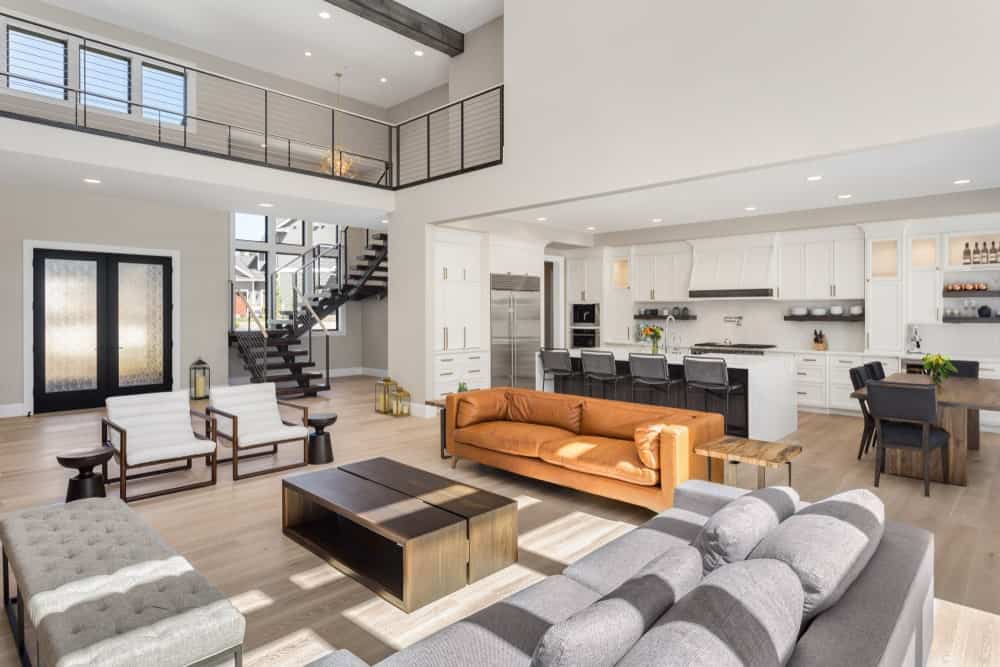
What Is Open Concept Interior Design?
When it comes to interior design, the term “open concept” refers to a home with a minimal amount of barriers in the main living spaces. This typically means that walls and doors do not exist in and between functional areas such as the kitchen, dining room and living room. They instead flow into one another, creating a spacious, flexible and open “great room” in which families live, cook and eat within visual and audible reach of one another.
Related: 101 Interior Design Ideas for 25 Types of Rooms in a House (2020 Photos) | 45 Open Concept Kitchen, Living Room and Dining Room Floor Plan Ideas | 101 Great Room Design Ideas (Photos) | Rebecca Mitchell Interiors Creates Stunning Open-Concept Home with the Hudson Residence
Background of Open Concept Living

Open-concept design became a mainstay of modern homes in the post-WWII 1950s, but famed architect Frank Lloyd Wright started experimenting much earlier. Pushing the boundaries with his “Prairie Style” architecture, rooms became larger and less confining, which helped pave the way for even broader interpretations. As families grew larger and space became more limited with post-war growth, the open-concept home, also known as having an “open floor plan,” became practical and desirable. The Spruce notes that the flexibility to reconfigure space as families grow and change was a major benefit of the new architectural approach – and it remains so even today.
Why Choose Open Concept Design?
Those who love open-concept living are devoted to aficionados and for good reasons. The absence of barriers encourages social interaction with those who inhabit shared spaces, allowing multiple activities to take place while still remaining connected and engaged. Eliminating walls can increase airflow in a home and potentially reduce energy costs with a better circulation of heating and cooling. It also allows more light to flood interior spaces, simultaneously facilitating a sense of continuity with the natural outdoor world.
Entertaining is a breeze with an open-floor concept, allowing hosts to interact with guests while preparing food. Everyone can mingle and mix with ease in a casual environment. The design also allows more gracious living for those with limited mobility, with plenty of room for wheelchair access. Aging in place becomes more realistic with an open-concept home.
Things to Consider

As with any architectural decision, it’s wise to consider drawbacks or limitations. Experts such as the designers at Case Architects and Remodelers point out things such as the reduction of wall space for art collections and family photo galleries as well as the inability to block off cluttered spaces when needed. Noise levels can be higher without walls to absorb the sounds of everyday living such as musical instruments, video games, podcasts, and pets. Privacy can be a factor for those who desire personal space, which often comes into play with teenagers, nannies, roommates or multigenerational living with elderly family members.
Noted interior designers also pointed out to Elle Decor that people living in large households sometimes relish even the small moments alone, such as when cooking or grabbing a quiet moment by the fireplace to read or chat with a friend on the phone. Some architects strongly recommend that those choosing an open-concept design make one concession: build a small “getaway room” on the side for a personal time when needed.






